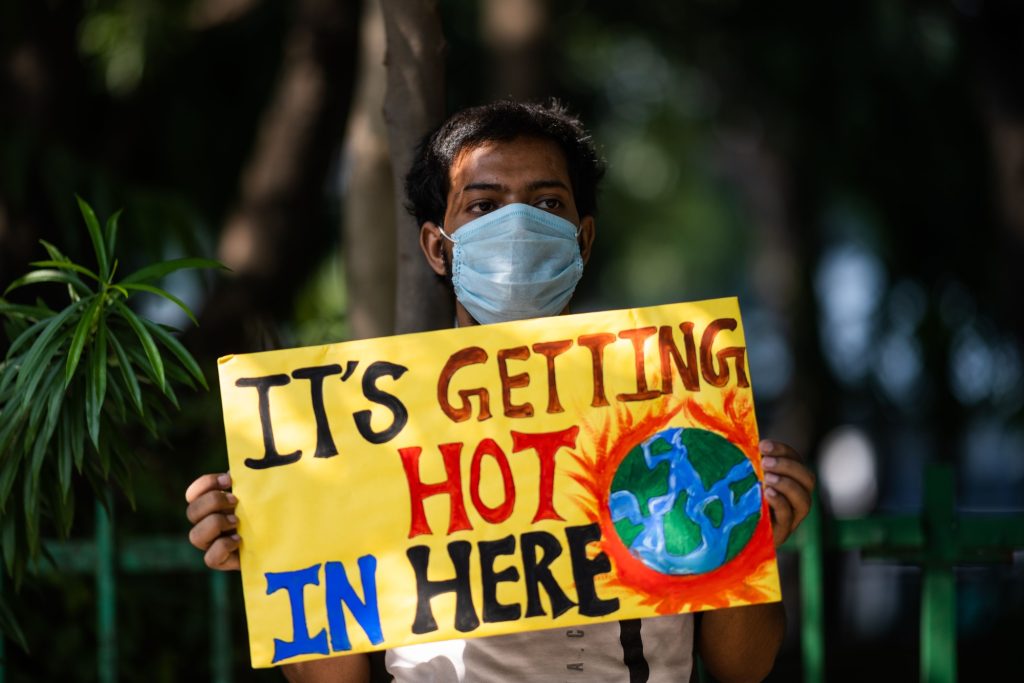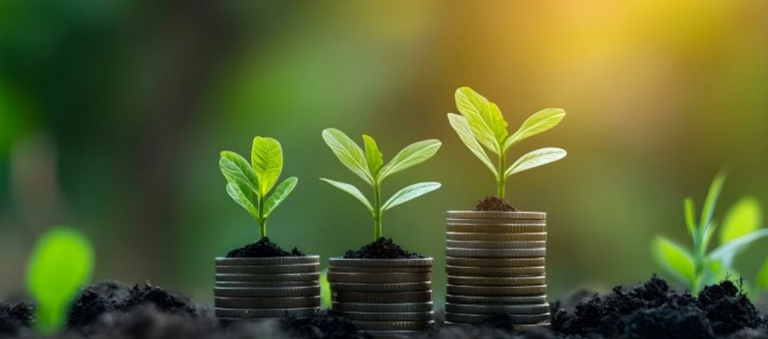Climate change is now a lived reality and its impacts are being felt in everyday lives. Unpredictable Indian monsoons, cyclone Biparjoy in the Arabian Sea, continuous heat waves and longer summer months across the country are now everyday news. Not just in India, the brunt of climate impacts is being felt across the globe with global temperature already up by 1.1°C as per the latest report of the Intergovernmental Panel on Climate Change (IPCC). Last year heat waves in stuck Europe, while the ongoing Canadian wildfires are burning down hectares of forests. Similarly, Antarctica is losing about 150 billion tons of ice per year.
Climate impacts have impacted millions of lives, livelihoods, agriculture and infrastructure. Yet, global emissions have been on a steady rise over the last few decades. Currently global fossil emissions stand at about 36.6 GtCO2, higher than ever before and slightly higher than the pre-pandemic levels. Nothing really seems to dampen nor slow down global emission rise, not even three-decade long climate negotiations and the multiple climate treaties and pacts that have been signed. Nonetheless, if we want to remain within safe limits of global warming, and avoid irreversible impacts of climate change, global temperature rise must remain well below 2°C with efforts to limit these to 1.5°C. To remain within this temperature rise, anthropogenic carbon dioxide emissions must go to net-zero by mid-century without exceeding the remaining carbon budget.
The meaning of net-zero
The scientific analysis by the IPCC led many countries to start setting their net-zero target. Presently around 26 countries have net-zero or carbon neutrality targets in law while 48 countries have them in policy documents and 9 others have pledges. But what exactly is net-zero? Net-zero is about greenhouse gas emissions, and implies that if there are any residual greenhouse gas (GHG) emissions that continue to be emitted by some sectors due to lack of technological alternatives or high economic costs, these will need to be balanced by sequestering an equivalent amount of GHGs. The sequestration can be through natural options like forests, or engineered options like carbon capture and storage (CCS). The target year, however, varies vastly depending on the context and national circumstance of each country. The European Union (EU), Japan, UK, USA etc., have a 2050 target while China has a 2060 target and India has chosen 2070.
Before net-zero comes peaking
Interestingly, even before a net-zero target comes the question of emissions peaking. While developed countries have already peaked emissions, emissions from developing countries are on the rise with increasing incomes, economic activity, and a demand for higher goods and better services. The UK peaked its emissions in 1973, the EU in 1979 and the USA in 2007 and they will have 77, 71 and 43 years between their peak emissions and net-zero year. This is in stark contrast to India that is beginning its development trajectory and is expected to peak in 2040 and reach net-zero by 2070 within a span of only 30 years. This demonstrates India’s strong ambition and commitment to fighting climate change while always ensuring development of its economy. The debate in India, hence, is not just about net-zero, it is about peaking and net-zero.
Sectoral pathways for achieving net-zero
The transition towards a net-zero future implies that efforts will need to be made across sectors, be it power, industry, transport, or the buildings sector. An analysis by the Council on Energy, Environment and Water (CEEW), estimated the type of transformation that will be required across sectors, while India charts its pathway to net-zero. The power sector accounts for almost half of India’s energy sector related carbon dioxide emissions and is heavily dependent on coal currently. If advanced technologies of carbon capture and storage were not available but hydrogen was available in the future, the power sector would need to peak its coal generation by 2040 and reduce by 99% by 2060, solar generation would need to go to 5,630 GW, wind would need to reach 1,792 GW and even nuclear power at 225 GW by 2070. This scale of transformation has not been seen before. Parallelly, petrol and diesel in the transport sector, coal and natural gas in the industry sector and even to some extent LPG and natural gas in the building sector, would all need to give way to electrification, hydrogen and biofuel. Essentially, energy systems across all the sectors will need to shift gears sooner than later to achieve the objectives of a net-zero future.
Carbon pricing is key
Putting a price on carbon is fundamental to achieving net-zero targets. A carbon price effectively makes fossil energy more expensive incentivizing substitution away from it. There are various forms of pricing carbon. At the policy level, the two main options are carbon tax or a cap-and-trade (or emission trading system [ETS]) scheme. The Government of India has chosen the latter with a bill regarding the same being already passed in the parliament. The process of finalizing the key elements for an India specific GHG emissions trading system is in process. Through such an instrument, the desired limit on emissions is achieved through a market determined carbon price. The ETS will play a key role in helping India achieve its net-zero goal. Carbon pricing, through an ETS, could be the most important instrument that will operate along with a suite of complementary sector specific decarbonization policies.
Finance is a critical impediment
One of the biggest challenges faced by developing countries relates to finance. Investing in new and emerging sectors is inherently risky. Investing in these sectors in developing economies where institutions are not strong, legal-contractual arrangements are not robust, and financial sector is not deep is even more riskier. Higher risk demands, from the investors’ perspective, higher risk premium. Essentially, the cost of finance is high. Even the quantum of finance needed for low carbon investments is huge. An analysis by CEEW estimated that the net-zero transition in India would need about USD 10.1 trillion in investments pertaining to power generation, transmission and distribution infrastructure as well as hydrogen production and vehicle manufacturing. While a part of it will be borne by India’s domestic financial sector, substantial part of it needs to come overseas, that too not at exorbitant cost of capital. This is also one of the key demands of India, as well as other developing countries, at the international climate negotiations. Absence of climate finance is a big impediment to a faster and smoother low carbon transition for India.
Many non-state actors have adopted net-zero targets
Beyond countries there are a many other private sector companies, cities and even subnational regions that have announced net-zero targets. Some of the biggest names in business world have net-zero targets, including Apple’s target in 2030, Alphabet in 2030, Amazon in 2040, Walmart in 2040 among others integrated into their strategy. Many Indian corporations have also pledged net-zero targets. These targets help them demonstrate commitment to sustainability to their customers and be prepared for the under ongoing transition as many jurisdictions are not putting a price on carbon. Similarly, cities too around the world are striving to be carbon neutral. For example, Europe is pursuing the Climate-Neutral and Smart Cities initiative and supporting 100 cities in Europe under this.
Cooperation and on-ground action is key to a successful just transition
While there are so much many pledges to net-zero, yet, we are still not on track. It is therefore imperative for countries and other actors to not just announce pledges but fulfil the pledges and commitments with follow up on ground action. All net-zero targets will need transformational changes, whether it is for countries, cities or companies. With fossil demand reducing in the coming decades and demand for cleaner technology, critical minerals, green hydrogen rising worldwide, there will be a shift in traditional suppliers, employers and wealth. There will be winners and losers, and it is critical to ensure just transition for any vulnerable communities that might lose during the transition process. It is critical that countries work together on this transition so that these climate policy shocks to not harm poorer countries and communities who depend on fossils for their livelihood and energy needs for development.
A global net-zero target can only be pursed if there is international cooperation and countries work support one another. Wealthy developed nations who have peaked their emissions decades ago, and still have high per capita emissions must pursue deep emission cuts in the future. Further given their comparative advantage, they must also provide developing countries with finance, clean technology and skill development. The recently concluded Summit for New Global Financing Pact in Paris is a much-needed step in the right direction to change the financial structure and deliver on climate finance through multiple sources, forms, mechanisms and delivery structures. After all, charting a path to net-zero would require finance but above all trusted cooperation from all.
Authors
-

Dr. Vaibhav Chaturvedi is a Fellow at the Council on Energy, Environment and Water (CEEW) and leads their low carbon economy and carbon markets research. His expertise is on modelling long term futures for energy and emissions within the framing of economic transformation. His role focuses on developing a modelling ecosystem in India, capacity building of young modelers, informing national and state level energy and climate policy, and informing the carbon markets debate in India.
-

Pallavi is a Programme Lead working with the Low-Carbon Economy Team at The Council. Her research interests include energy transition, climate policy, low carbon pathways, smart cities and sustainable development goals. This is her second stint at CEEW and earlier she had worked on modelling rooftop solar PV for India on the Global Change Assessment Model (GCAM).



